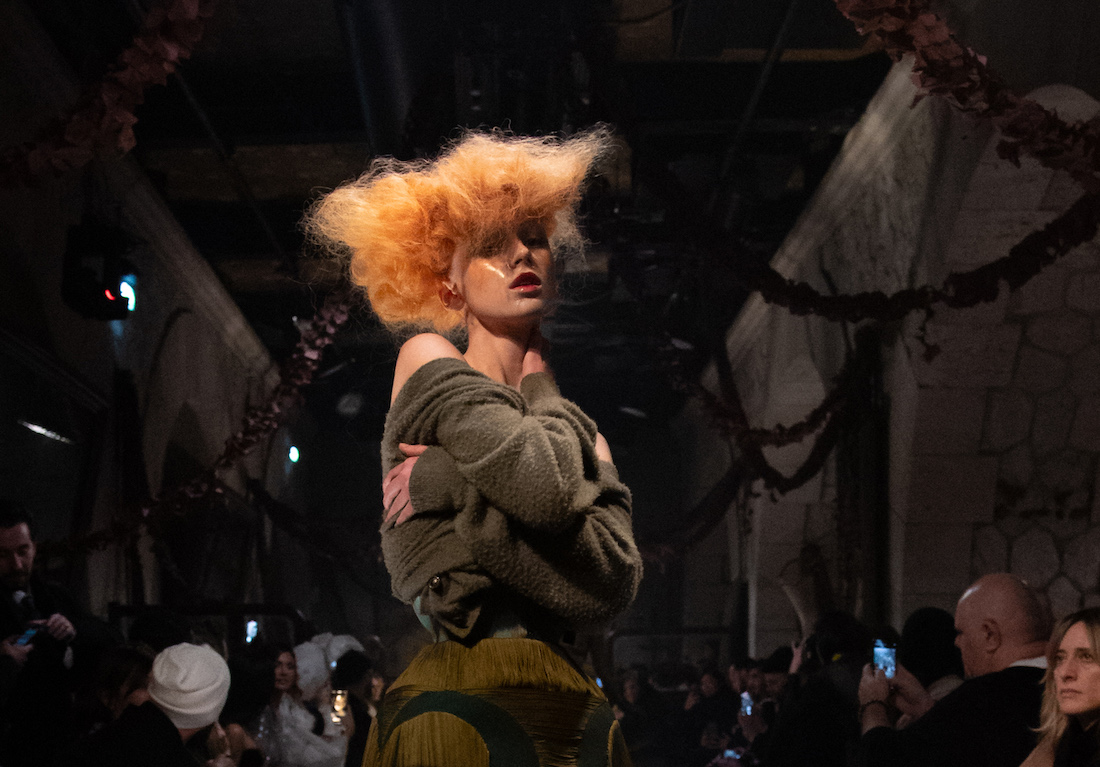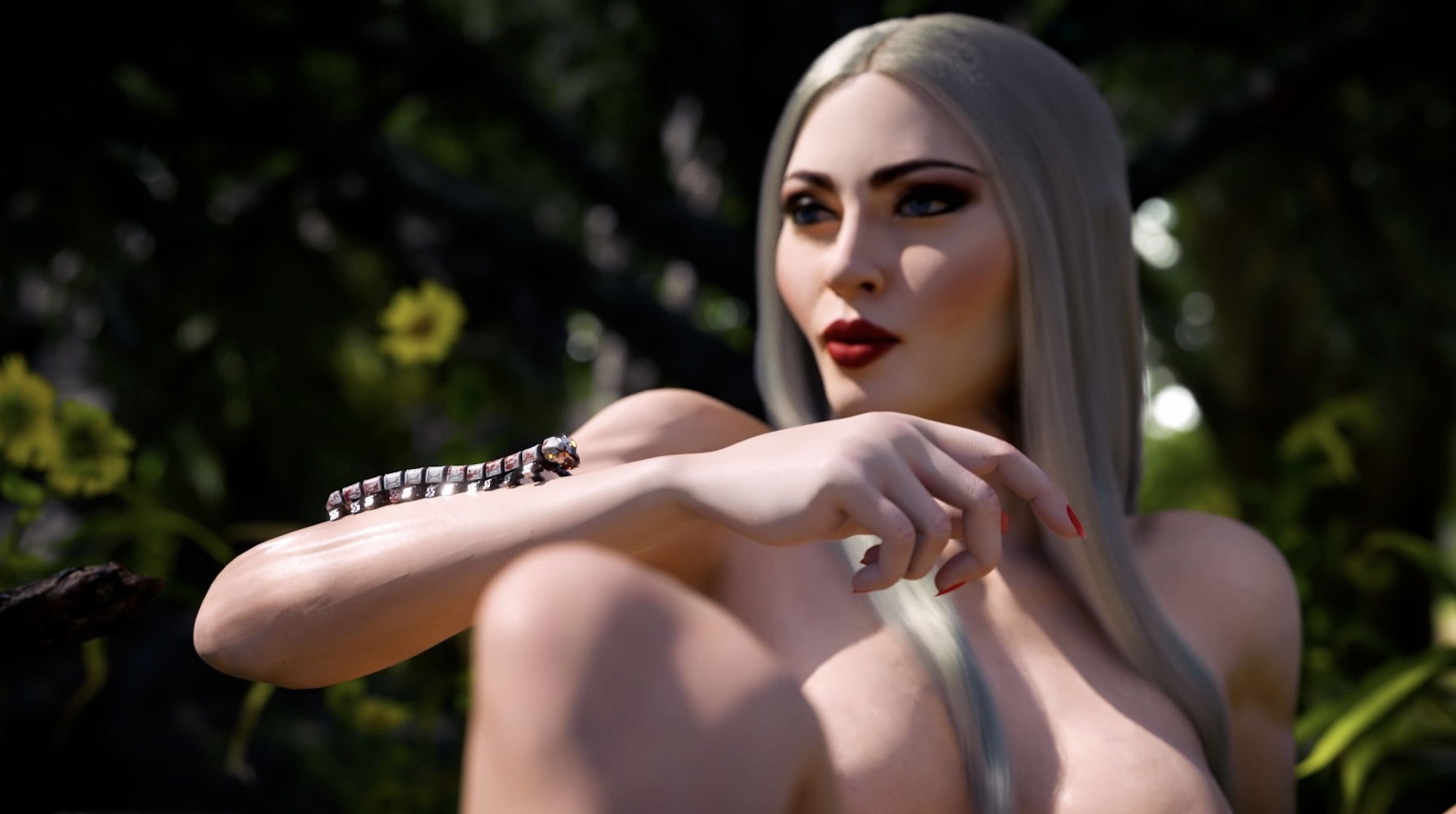Ezra Miller has been making texture-filled, hypnotizing generative digital art for years—long before the advent of NFTs. His practice of visually exploring the outcome of an algorithm with different sets of parameters runs in parallel to commercial projects with major names like Nike, Maison Margiela, and Hood By Air, as well as collaborations and performances with Objekt (AKA TJ Hertz) and others.
With the establishment and growth of a digital art market via NFTs, Miller saw an opportunity to adapt his process to a new medium. His first collection, “Solvency,” was met with huge success. Taking inspiration from feathers and photographs, he created Richter-esque images with infinite dizzying distortions. For the frst time, after years of making digital art, he found an audience and a means to support the making of the work outside of taking on commercial commissions. Through his Discord server dedicated to owners of “Solvency,” Miller has found a community with which to connect.
But just as he was finding success in his art career, his personal life was dealt a major blow. His mother—and undoubtedly longest and biggest support—passed away from cancer. Miller opened up to Whitewall about the challenge of experiencing such a devastating loss while finally finding his footing in art. He shared how after taking some time to process, he’s been fueling his next project, “Silk Road,” with the knowledge and comfort that his mother believed in him and his art.
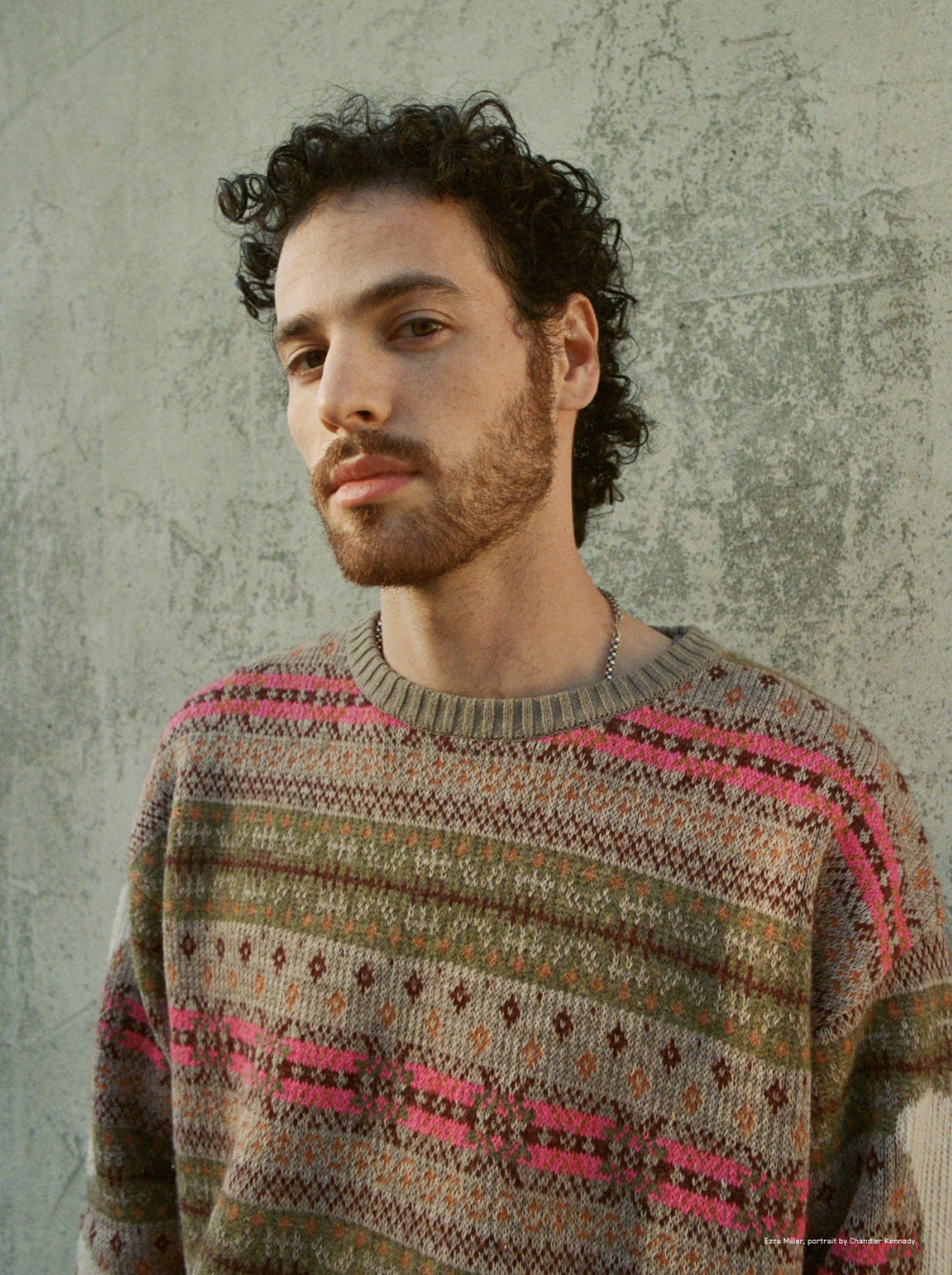
Ezra Miller, portrait by Chandler Kennedy.
WHITEWALL: In April of last, year, you launched a major NFT collection, “Solvency,” comprised of five hundred generative pieces. What was your initial vision for this collection?
EZRA MILLER: I wanted to find a way to do something that felt like a continuation of things I’ve been exploring in my practice for years. The way that I had seen generative NFTs taking shape made it clear that I could adapt my processes to this new medium without much change in my style of working, since I was already using randomly seeded values to control the parameters of generative systems.
WW: What was the inspiration behind the layers of texture, color, and movement we see in these works?
EM: For “Solvency,” I think I can pin down my inspiration to three main categories: bird feathers, particles, and using the texture and quality of photographs as palettes. I was inspired by bird wings and the patterns you see on feathers when you look at them individually and as a collection of discrete shapes containing so many different patterns and colors. I was trying to figure out a way to re-create similar patterns by using a technique of slowly animating across different planes of textures and leaving trails.
I was also trying to make something that felt photographic in its colors, the way that when you blow up a scan of a photograph you see lots of noise and different imperfections that form a recognizable image. I found that a GAN was really good at re-creating this kind of noisy quality, and I generated a few thousand images that I narrowed down into “texture palettes.” I experimented with simulating millions of particles in real-time to create simulations that would advect color in a way that mimicked natural forms and patterns, and evoke the kinds of shapes that would fit the specific texture palettes I chose. I grouped textures into categories that felt poetic and meaningful, as well as purely abstract ones.

Ezra Miller, “Solvency #268,” 2021, courtesy of the artist.
WW: Each edition becomes unique, and flows infnitely. As an artist, what is it like to create the parameters, and then let go of what a work can ultimately become and how it lives on?
EM: It’s a challenge because you have to create something that feels like it could be a strong work both in spite and because of all of the stochastic possibilities. I fnd that you have to be very careful about what parameters you allow to be random and which ones you hard-code. It’s a lot of trial and error, and involves staring at the same thing for weeks and months at a time. When I feel that I could keep looking at any single random artwork in a series for as long as possible, then it feels like it could be considered finished, but to get to that point requires the introduction of so much logic and control, and experiments with things that don’t work.
WW: You also wanted to present the work in a very specific way, designing its front and back end on Solvency.art. What is lacking on current NFT platforms, in terms of showcasing digital art?
EM: I’m particular about how my work is presented and feel that because these were to be seen on the Web, they had to have a totally custom front end. I didn’t feel that digital art platforms were lacking per se, but my process is so specific in terms of the tools that I use and the way I wanted the works to be seen, in a pure, real-time format, that it necessitated this custom approach. My critique of NFT platforms, in general, is that they somewhat defeat the purpose of allowing artists to operate on their own within this new market. A centralized platform feels antithetical to the independent nature of the blockchain.
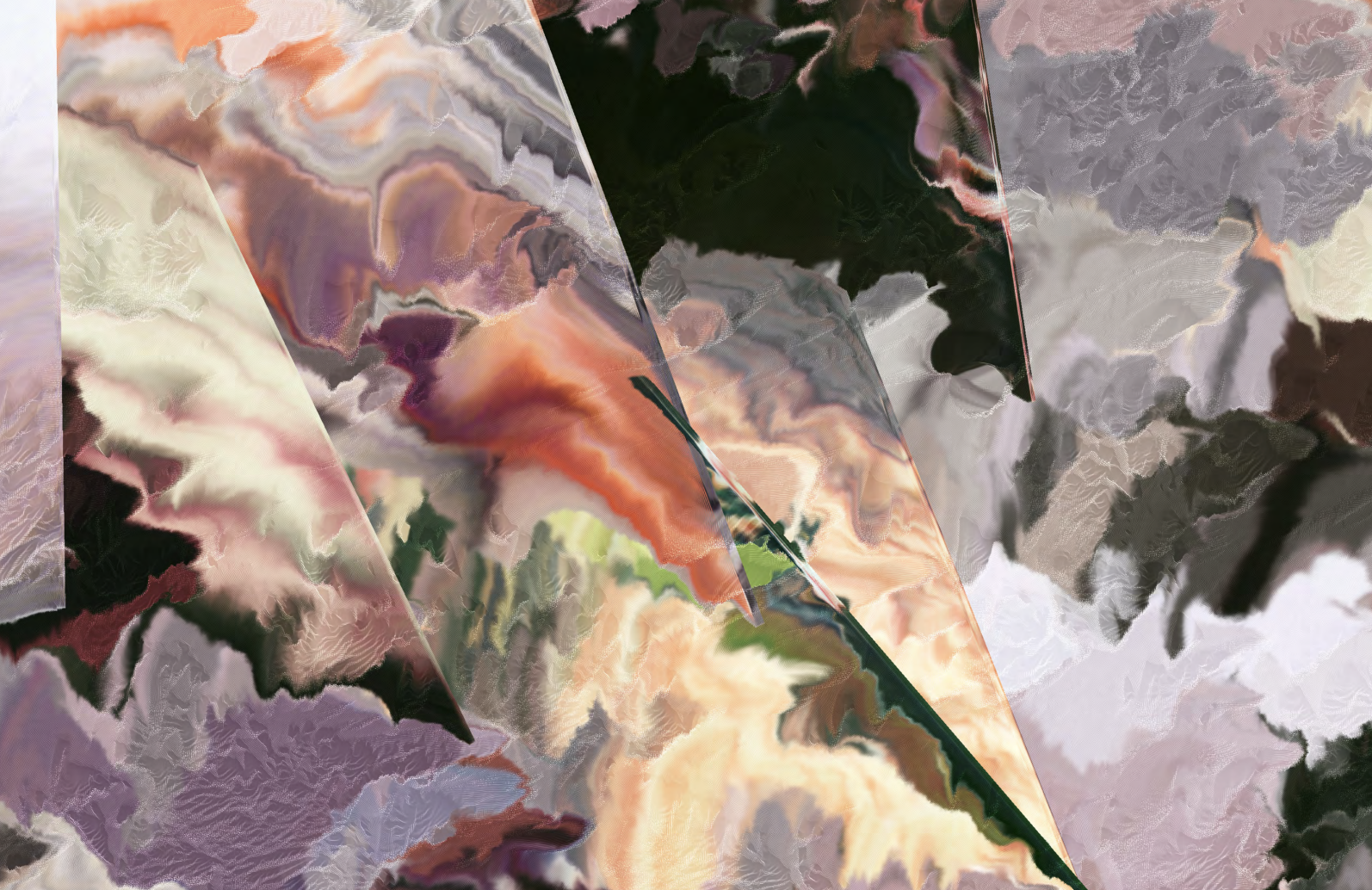
Ezra Miller, “Solvency #391,” 2021, courtesy of the artist.
WW: You’ve been doing generative art for almost a decade. Why do you think this kind of work has found a following and home in the NFT space?
EM: It fits perfectly with the digital native mentality that the blockchain and its proponents have adopted. People are no longer married to physical ideas of ownership, and instead have started to realize how much ownership is already tied to immaterial pieces of code by which so much of the technology we use every day is operated on. When you look at a generative work on the blockchain you can immediately understand that it is unique and tied to the cryptographic hash by which it was generated, like a signature.
I think a lot of people are also discovering generative art for the first time, or getting more familiar with the many different types of generative art that exist, and realizing how much potential it has as an art form that can transform itself and play itself back in real-time, creating new possibilities for display, collecting, world-building, et cetera. It’s been overlooked as a medium for many years.
WW: We’re curious to hear your thoughts on entropy and the infinite—in your work and in the spaces in which it exists. Pieces like in “Solvency” continue on infinitely, but ultimately we don’t know how long anything, even the blockchain, will live on for. In that balance of control and letting go, we see parallels in the making of your art.
EM: In “Solvency,” and crypto art, the idea is that the work is technically archived forever on the blockchain. Yet there is no guarantee that this is true, and over time things decay and become obsolete, as is the case with every other artistic medium. I’m quick to point out that even though we try our hardest to preserve this digital artwork, there’s no real way to do this, as the tools we use constantly change, and with digital works change happens even more rapidly than ever before. It does draw a nice parallel with the works, in that they’re always in the same state of change, never fixed to one image.
WW: How did a project like “Solvency,” and the reaction to it, impact your practice, do you think?
EM: I think it has given me the opportunity to focus on how to be an artist, as a career. I felt like I couldn’t really make money from my art until now. At least I wasn’t sure how, since I’m not yet involved in the “art world,” in the sense of galleries, shows, et cetera. It was mostly something that ran parallel to my commercial work.
In the past, I was constantly taking on new jobs with commercial clients, and I became really burnt out and creatively uninspired. I enjoyed a lot of the work I did, especially the music collaborations and performances, and I hope I can still do that in the future. But I always wanted to find a way to sustain and explore my art practice, instead of feeling stuck working my way up the ladder of commercial fashion and brand collaborations. It can be a pretty exploitative industry. I feel lucky that I made the decision to go down a new path.
WW: As an artist, have you found the crypto space as a place to engage with your followers or collectors in a new way? Is that valuable for you?
EM: Considering I didn’t have collectors until I started doing NFTs it is all new to me. To be able to directly communicate with the people buying my work, which in many cases turns out to be my friends or peers, has been great. It’s rewarding to be able to get to know the people who support and appreciate your art. In my own Discord server for “Solvency” owners, we get to just talk about whatever we want and hang out in an informal setting. It feels down to earth, they feel comfortable knowing that they can hit me up about anything, and I feel good knowing they’re curious to see what I’m working on and to hear my perspective about the works they’ve collected.
Ezra Miller, “Solvency Print Test (Fire),” courtesy of the artist.
WW: Right as you were having this big success with your art, you were also experiencing great hardship in your personal life, with the heartbreaking loss of your mother last year. What was that like, living a career-high while grieving?
EM: It was really hard. My heart is still totally broken that my mom is no longer here. I don’t yet have the words to describe how sad it’s been for me trying to process her absence. She was such a big supporter of everything I did, especially with my art. She was always curious to know what I was working on, and genuinely interested in my work and the people in my life, the people I worked with and admired. And she loved my dad and my brother and me so much. It all felt wrong to be finding success while knowing she was not going to be there to experience it since she wanted to see everything and be a part of it. I’m still getting used to the idea of working and putting out my work without her around to witness it. It’s completely unfair to lose someone so early on in her life.
WW: We are so deeply sorry for your loss. Have you been able to take time to slow down, reflect, and be with your family? How has the past year, which we know you’re still processing, fueled what you want to do next, or shifted your focus in the studio?
EM: I’ve been able to be with family and friends and had some time to think and reflect, but it still feels like I’m processing things every day. As time passes it becomes easier, and occupying my time with work and other distractions (my biggest lately has been basketball) has helped. I think the thing I can see most clearly now is that I’ve got an opportunity to do what my mom would’ve wanted me to do, which is just work every day on my practice and develop what I’ve been doing for the last almost decade. She believed in me as an artist, and I’m trying to channel her energy and focus it into my work.
Ezra Miller, “Untitled (Rave), Silk Road,” 2022, courtesy of the artist.
WW: You’re in L.A. right now for a few weeks. What are you doing there, and why did you want to start off 2022 in Los Angeles?
EM: When I’m in L.A. I feel like my life slows down a bit, and I came here because I wanted to find some time and space to finish my next series, as well as avoid the cold in New York City. It feels like there’s less distraction here for me, and I don’t feel the pressure of my work quite as much. I just wanted to try to make things a bit easier on myself after what was such an intense year last year. I found myself really losing focus the longer I tried to force myself to stay in the same place. I just needed a change to think about things in a different light.
WW: You’ve been working on a new NFT drop for this spring. Can you tell us anything about that project?
EM: It’s a continuation of the things I’ve been thinking about in my practice all year. It’s called “Silk Road.” I started with an idea of making a series of moths, playing with ideas of symmetry, and color. It’s evolved from there, into a varied series with a lot of different components. I wanted to try to correct a few things that I felt didn’t work in “Solvency,” especially with how the way textures are introduced to the simulation is visible on screen. This time I’ve tried to hide it a bit.
I’m also really interested in landscapes and creating images that look real with AI tools. They’ve become so powerful in the last year that we’re now able to create images with text prompts in a matter of seconds that look literally as if they’ve been shot by a camera. I’m incorporating these photographic landscapes and still lifes into the series. I want people to be able to see both abstract works and figurative ones, and find some kind of shared language between the two styles. I want it to feel like you’re seeing memories of things that never happened, memories that quickly fade away.





